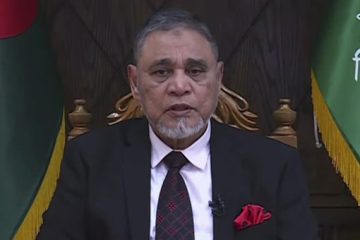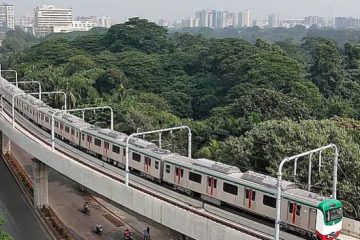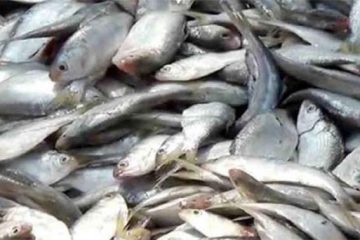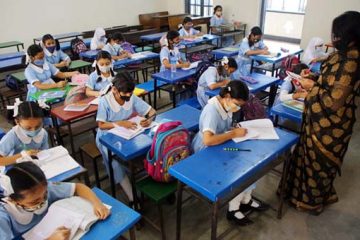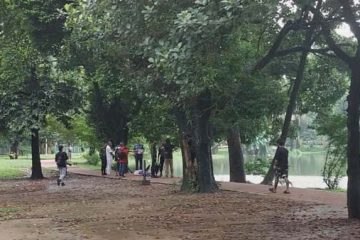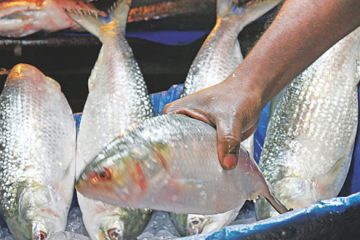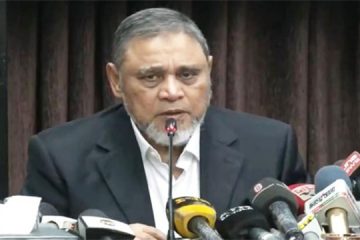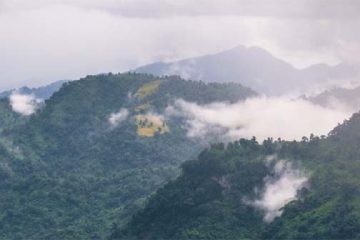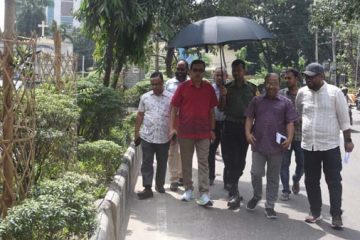The quantity of dissolved oxygen (DO), a vital component of water, has gone down to zero per cent in the Buriganga. This was found by a group of experts on Thursday when they conducted water quality tests in the river. According to Environment Protection Rules 2007, the river water should have above 6 per cent DO for being used by households. For aquatic life the required DO rate is five per cent.
Poribesh Bachao Andolon (POBA) and the WBB Trust jointly conducted the test at 17 points of the Buriganga from Fatulla to Gabtoli.
The experts expressed deep concern over the Buriganga water pollution that posed a serious threat to public health and the ecological balance. No aquatic life can sustain itself in such water, POBA secretary engineer Abdus Sobhan said while briefing reporters.
The test result revealed that the lowest percentage of DO of .24 was found at the eastern point of Sadarghat Launch Terminal, while the highest percentage of 2.20 was found at Gabtoli against the normal quantity of 6. The DO was .29 at Chandnighat, .75 at Dolaikhal outlet, 1.10 at Postagola, 1.66 at Shympur, .98 at lower Shympur, .63 at Pagla, 2.19 at Shubhadda, 1.16 at Badamtolighat, .51 at Midford, 2.18 at Kamrangirchar, 1.15 at Sikder Medical, 1.83 at Bosila, 1.73 at Jalmashi and 2.30 at Amin Bazar.
The lowest percentage of pH was recorded 7.18 at Chadnighat and the highest 9.93 at Shympur, against the normal quantity of 7. The electric conductivity was found out of range at Shaympur, Chadnighat and the Madina diesel station.
Abdus Sobhan, who is a former additional director general of the Department of Environment, said sewerage of Dhaka city, household waste, tannery waste, industrial waste and water vessel’s waste are the main reasons behind the pollution of the Buriganga water. He recommended setting up sewerage treatment plants at different outlets, refraining from throwing households waste into the river, shifting the tannery industries immediately and setting up effluent treatment plants to save the lifeline of the city. The POBA leader said they would carry out tests throughout the year. Besides, he said, they would look into the grabbing of the Buriganga and check whether the pillar set up as river demarcation was correct. While carrying out the test over a 23 km stretch of the Buriganga, no one was seen catching fish. Sewage, tannery and industrial wastes were being discharged into the river through different outlets.
The POBA joint general secretary, Syed Manowar Hossain, coordinator Atik Morshed, Md Selim and project director of the WBB Trust, Ziaur Rahman Litu, development officer Atikur Rahman and others took part in the water testing programme.
According to Dhaka WASA, about 13 lakh cubic metre of sewage is produced in the capital everyday of which only 50 thousand cubic metre is treated at Pagla
Sewerage Treatment Plant and the rest 12.50 lakh cubic metre is dumped in Buriganga River.
Daily dumping of huge amount of sewage into the river resulted in massive water pollution posing a serious threat to public health as well as aquatic life. The heavily polluted water from the Buriganga cannot be used for household, industrial and agricultural purposes, experts said.
Additionally, the tannery industry at Hazaribagh is dumping 21,000 cubic metre of untreated waste every day. The tannery waste contains poisonous chemicals including chromium, lead, and sulphuric acid.
Besides, about 90,000 cubic metres of industrial waste is being dumped daily by a host of other industries into the river as they have no effluent treatment plants.
-With The Independent input





